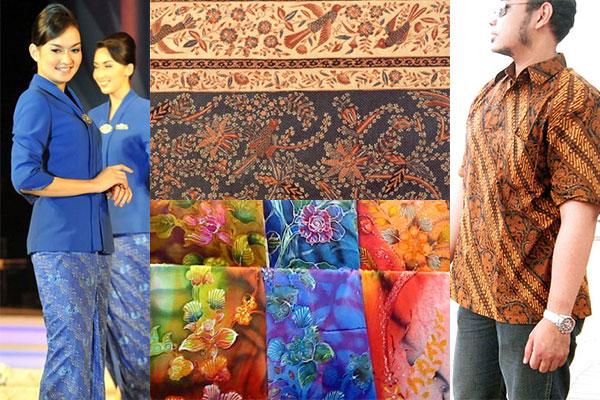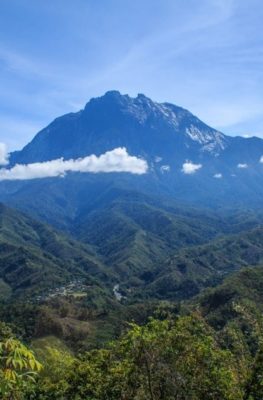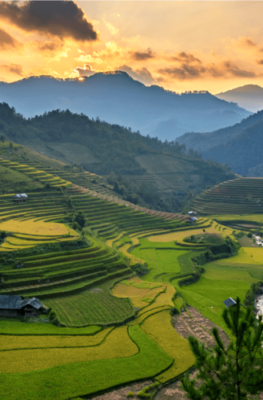Published on October 24, 2013

Though there is disagreement on the origins of batik, most agree the colorful cloth reached Java in Indonesia by the 7th century. Its production technique spread throughout the island, often changing, depending on available tools for applying and carving the batik’s wax and dyes. Over the centuries, batik spread to Sumatra and north into peninsular Malaysia’s coastal areas and southern Thailand as far as the tourist island, Koh Samui.
Javanese batik, especially from Yogyakarta and Surakarta, displays the peoples’ view of the universe. Three traditional, easy-to-obtain colors are used – indigo, brown, and white – which represent the three major Hindu Gods: Brahma, Vishnu and Siva. Nobility have special patterns, with wider stripes or wavy lines indicating a higher rank, making it easy to determine the person’s royal lineage. Their batik, as well as those used for special occasions, is known as prada (gold) batik as they use gold dust during the dying process.
Other areas of Java create distinct patterns, often using motifs from their daily lives, and featuring flowers, nature, animals, folklore or people. So critical is batik to the Javanese and all of Indonesia that in 2009, UNESCO designated Indonesian batik as a Masterpiece of Oral and Intangible Heritage of Humanity.
Batik-making spread along the northern coast of Java and to Madura, but the process and themes began changing. Coastal batik, also know as pesisir batik soon developed, mainly due to foreign influences from trade partners. As such, textile design, coloring, and motifs sharply contrast with inland batik. The colors are especially vibrant, and a typical motif might show Chinese traits with themes like clouds, dragons, and lotuses, as well as floral patterns. Altogether, there are five different types of coastal batik, which sometimes use extremely vibrant reds, yellows, and greens.
Unlike inland Javanese batik and some coastal batiks, whose beliefs prohibit certain themes, Balinese are mainly Hindu and free to depict any image. Though Javanese batik-making played a role in the Balinese version, so have tourists. Balinese batik is relatively new, and fast growing demand from visitors triggered the island’s batik production to soar. Balinese batik sometimes tie dyes its fabric with bright colors, which blends into a smooth gradation of various shades.
Sumatra’s batik dates to the 13th century and the Melayu Kingdom in Jambi, and visitors can best see the process in the village of Mudung Laut in Pelayangan district. Sumatra’s Minangkabau ethnic group have there own style of batik, which uses clay for the dye. Other Indonesian islands have batik similar to those found in Java and Sumatra.
The first mention of Malaysian batik is in the 17th century Malay Annals in a tale about a Malaccan king, who sent a sultan to India to purchase a type of batik, but the ship sank. The sultan managed to survive and learned to make batik to fulfill the king’s wish. Today, tourists can find Malaysian batik on the east coast in Johor, Kelantan, Terengganu and Pahang. Motifs tend to be of plants or geometric shapes as human and animal images are taboo.
Batik finally made its way to southern Thailand, and locals still wear its as their daily garb or as uniforms at work. Thai batik is easily found on Koh Samui, where they are sold as casual beachwear. Themes vary from the islands landscape and important parts of island culture such as coconut shells, palm trees, tropical flowers, and fishing boats.
Batik has made a significant contribution to Singapore’s arts scene, with traditional and contemporary interpretations of the medium by local artists such as Sarkasi Said, Jaafar Latiff, Limei Shimmen, and Kamal Dollah. Indeed batik offers opportunities for creative expression to visitors to Southeast Asia. Beginners and enthusiasts alike may attend batik painting workshops at the Substation and Nanyang Academy of Fine Arts (NAFA) in Singapore.
Source (information & images): Wikipedia.





